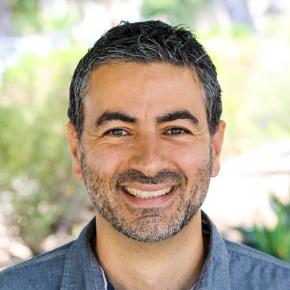Abortion-choice advocates. Angry college students. Graphic pictures of abortion. Not really what you want to expose your ten-year-old son to. That’s what I did, though. I took my son to the center of UCLA’s campus during an abortion protest and had him engage abortion-choice advocates that were twice his age.
It’s tempting to shelter young believers from false ideas. We think we’re protecting them, but we end up isolating them. This backfires because we don’t prepare them to dialogue with those who disagree with them. When they encounter a false idea, young believers get caught off guard. They’re more likely to be seduced to believe something we’ve worked hard to protect them from.
Instead, we need to inoculate young believers against false ideas. This is similar to the way we inoculate against a virus. To vaccinate against polio, for example, you ingest an attenuated (weakened, but alive) virus. Your immune system responds by producing antibodies, killer cells that seek and destroy the virus. That way, when your body is exposed to polio in the real world, your immune system isn’t caught off guard. It neutralizes the threat with its army of antibodies.
Inoculating young believers against a false idea works the same way. You teach them the errant view, why people believe it, and what’s wrong with those reasons. That way, when they come across someone who holds the view, they’re not surprised by the person’s arguments. The young believer easily recognizes their reasoning and is ready to respond.
Last month, I inoculated my son against a dangerous idea: abortion. Former Stand to Reason speaker (and my good friend) Steve Wagner was bringing the Justice for All exhibit to UCLA. Their ministry uses graphic images of abortion to spark conversations about abortion on university campuses. In anticipation of their arrival, I spent three days teaching my son the basics of embryology, some arguments for abortion, and a few pro-life tactics of persuasion. Then, I role-played an abortion-choice advocate to get him familiar with how the material is applied in conversations.
After he was comfortable arguing with me, I asked my wife to make a case for abortion to him. That way, he was exposed to a different person’s thinking. He struggled a little because she thinks and responds differently than I do. I gave him feedback on his performance and we prepared for the next stage.
Justice for All provided an all-day training for pro-lifers who wanted to become better equipped or were planning on attending the campus protest. I took him so he’d learn pro-life training from different people. This would solidify material he was familiar with, provide nuances to training he knew, and expose him to new arguments. More importantly, he got to role-play with strangers (both students and adults) who thought even more differently than my wife.
Field training was next. Our two-hour road trip to UCLA gave us time to reflect on his training and pray for the upcoming hostile encounters with real people who would disagree with him.
My son’s first encounter with an abortion-choice advocate occurred while he stood next to Steve during a conversation. Although he got to mostly see Steve model the pro-life tactics he learned a few days before, he also contributed a little to the conversation. I was by his side for his second encounter. My son saw a college student nearby and, without any prompting, approached him and started talking to him. I stayed completely out of the conversation, allowing my son to wrestle with the man’s arguments and formulate responses.
After a few conversations, his confidence increased. While I was talking to a couple of other students, I heard some girls laughing behind me. I turned around and noticed my son who, on his own, had started talking to two abortion-choice advocates. They were disagreeing with him, but having fun in the process. He had about a dozen conversations that day.
To be honest, I was a little skeptical he’d be able to traffic with college-aged students, but he handled himself nicely. He was able to identify tangents and prompt the abortion-choice advocates to focus on the question of whether the unborn was human (which is what he was taught to do).
The process of inoculating against an idea is a progression. For my son, I taught him content first. Then, I had him role-play with me, my wife, and strangers who were pro-life. Then, he watched experienced pro-lifers model the tactics with people who disagree. Finally, he engaged abortion-choice advocates himself. I gave him feedback at every step and helped him process every encounter.
I’m not saying every parent needs to do the same thing with their ten-year-old. I’m not even saying at what age they should start or with what topic. My point is to give you an example of inoculation. Parents and youth leaders can apply the same principle with other ideas their kids will encounter.
As you can see, inoculating is not just something I teach about, it’s something I live out as well. Why? Because it’s a principle that works.

